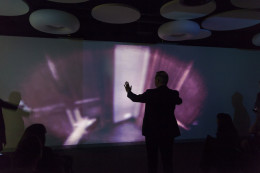The Talking Touchscreen framework has also been built into an application called Health LiTT (available at http://www.healthlitt.org
 ),
a measure of health literacy that can be self-administered in either
English or Spanish using sound, text, and images. It covers health- and
insurance-related topics and informed consent. The Talking
Touchscreen/La Pantalla Parlanchina and Health LiTT have also been
incorporated into Assessment Center, a free online research management
tool that helps researchers create study-specific Web sites for securely
capturing participant data (available at http://www.assessmentcenter.net
),
a measure of health literacy that can be self-administered in either
English or Spanish using sound, text, and images. It covers health- and
insurance-related topics and informed consent. The Talking
Touchscreen/La Pantalla Parlanchina and Health LiTT have also been
incorporated into Assessment Center, a free online research management
tool that helps researchers create study-specific Web sites for securely
capturing participant data (available at http://www.assessmentcenter.net  ).
By overcoming assessment barriers to self-administration of
questionnaires, these tools enable new insight into previously
undetected disease or treatment problems among low literacy patients,
and also enable real-time reporting of health literacy scores.
).
By overcoming assessment barriers to self-administration of
questionnaires, these tools enable new insight into previously
undetected disease or treatment problems among low literacy patients,
and also enable real-time reporting of health literacy scores.The CancerHelp-Talking Touchscreen is available at http://www.cancerhelp.org
 .
.To learn more about how this innovative tool is helping patients, read the Impact Case Study at: http://www.ahrq.gov/


















